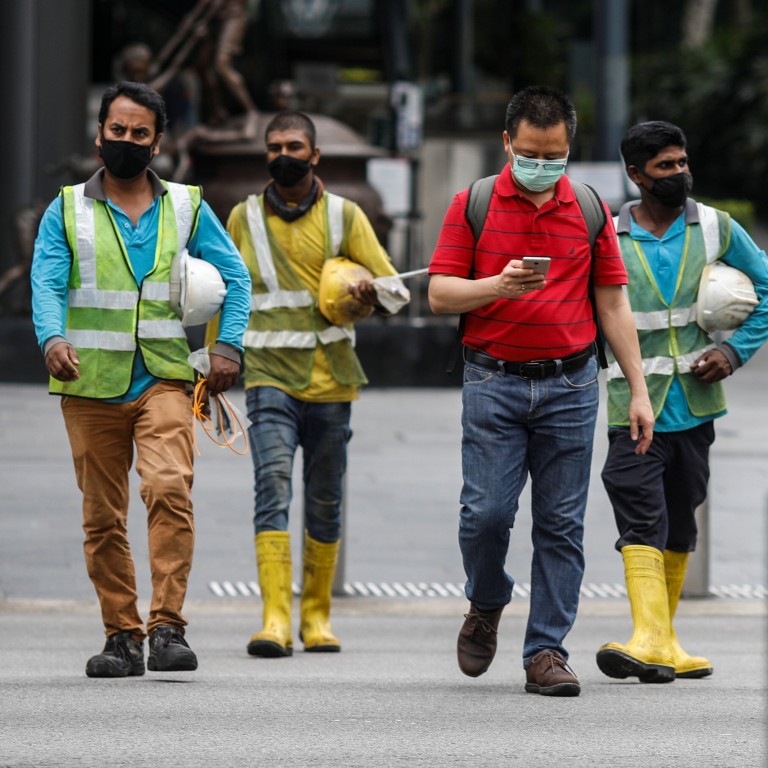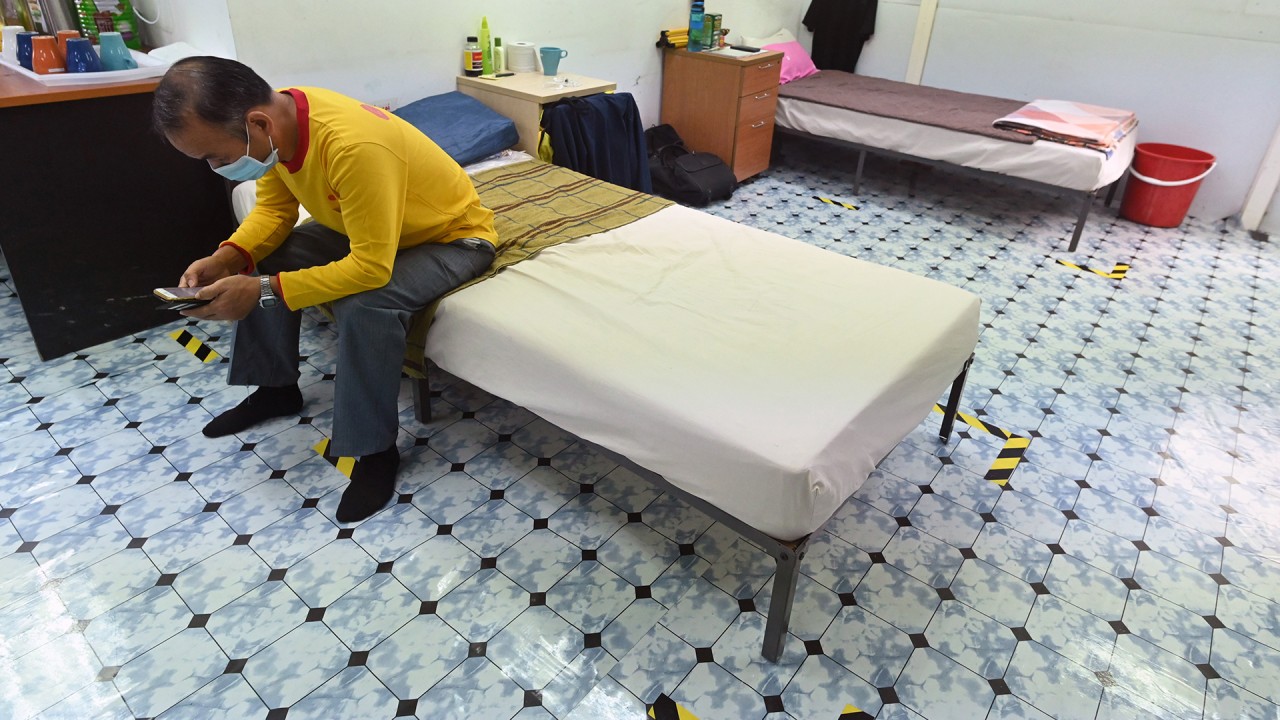
Singapore to build new dormitories, set rules on migrant workers’ living standards
- At least 11 new premises will be constructed in the next two years to reduce the density in dorms, which have seen mass coronavirus outbreaks
- Alongside the boost in living conditions, officials have also encouraged Singaporeans to welcome migrant workers ‘as part of our community’
At least 11 new dormitories will be completed within the next two years, housing some 60,000 workers, with plans to construct more down the road for another 40,000 workers. These purpose-built premises will come equipped with amenities including mini-marts, barber services, and indoor recreation facilities.
Describing the plan as a “major building programme”, national development minister Lawrence Wong said at a virtual press conference that the aim was to reduce the density of the dormitories and to design new ones that would be “more resilient to public health risks”.
Singapore’s domestic workers faced heavier workloads during ‘circuit breaker’
The authorities will also introduce new rules, including increasing the living space of workers, limiting the number of occupants per room, and having more sick bays and isolation facilities.
“The changes will be necessary to better protect the workers from widespread transmission, and to strengthen the resilience of the dormitories against pandemic risks,” said manpower minister Josephine Teo.
The announcement comes amid concerns over the cramped and poor living conditions of commercially-operated migrant worker dormitories that house some 300,000 of the country’s 1 million low-wage workers – a factor some critics cite as having led to the dramatic surge in coronavirus cases in Singapore.
The infections have sparked a broader discussion on whether the island nation should rely less on foreign labour in the post-coronavirus era, with second minister for finance Indranee Rajah saying that Singapore should accelerate automation of some tasks. But trade minister Chan Chun Sing had said last week that unlike other countries, it would be hard for Singapore to cut down on foreign labour due to its size and the lack of natural resources.

01:19
Singapore Land Transport Authority workers now living on-site after Covid-19 outbreak in dorms
As Singapore was set to lift its partial lockdown on Tuesday, manpower minister Teo said the authorities were working with dorm operators and employers to house workers, many of whom were currently staying in sites including army camps, sports halls, as well as vacant housing blocks.
“These sites are temporary and will need to be returned to their original uses or redeveloped soon. At the same time, we do not want all the workers to return to their original dormitories, as our aim is to reduce the density of these dormitories,” said the ministry in a statement.
Teo added that short- and medium-term solutions would include introducing additional housing spaces by the end of 2020 that could accommodate some 60,000 workers.
One example was “quick-build” dormitories, which would house 25,000 workers for about two to three years. The government will also place another 25,000 workers in unused state properties, such as vacant factories and former schools, while others will stay in temporary quarters built by contractors to house their workers on-site.
Singapore looks to restart construction, stop migrant workers mingling
Teo said the construction of temporary dormitories would be a “very good opportunity” for the government to pilot new standards of living conditions for migrant workers.
Wong, the national development minister, said the government was considering a “build-own-lease” model for future worker dormitories, where the authorities would develop and own them. The leasing and operations of the dormitories could be done through a separate entity, such as an NGO, a voluntary organisation or even a private entity, he said.
He added that this would mean that the cost to build the dorms would be higher, and the ministries would look into how to manage the increase in cost.

Teo also said that while the new standards and rules for dormitories would be helpful, what should not be discounted was the assumption that “risk will always be present in a dormitory”.
“Just like the risk is present in any household, a dormitory will always be a big household. And you can make sure that fewer people share the same room or facilities like kitchen or bathrooms, but there must also be discipline in the practice of hygiene and segregation,” she said.
Wong said the plans would fit into the narrative of how Singapore had been actively upgrading its dormitories to achieve better living standards, and pointed out that Singaporeans also had a part to play.
Singapore NGOs call for rethink of migrant workers’ rights
He said it was “inevitable” that some of the new dormitory sites would be built near residential areas, and hoped that Singaporeans would reject the “not-in-my-backyard mindset”.
In 2008, residents of the upper-middle class Serangoon Gardens neighbourhood fought against the government’s plans to convert an unused school there into a dormitory for migrant workers, citing reasons such as higher crime rates and a possible fall in property values.
“All of us must do our part, by rejecting the ‘not-in-my-backyard’ mindset. We really need to appreciate the contributions of all that our migrant workers have been doing and will continue to do in building Singapore and welcome them as part of our community,” Wong said. “And this is an important part of how we can also learn from this whole experience and become a more inclusive society.”

